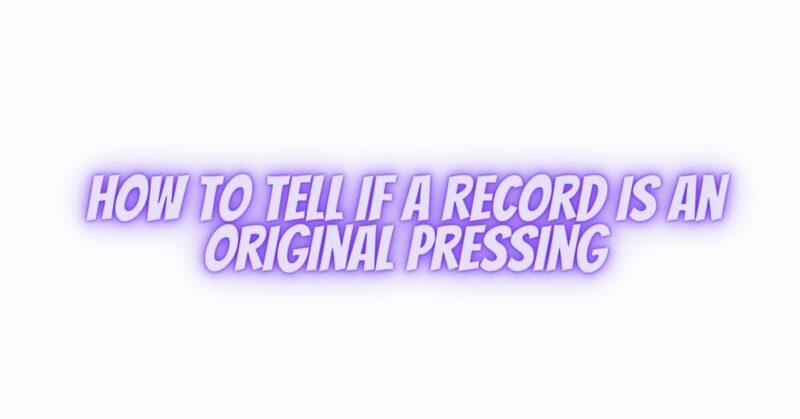Vinyl records have a unique charm and appeal that continue to captivate music enthusiasts and collectors around the world. For vinyl aficionados, the allure of owning an original pressing of a beloved album is unmatched. However, with the passage of time and the proliferation of reissues, determining whether a record is an original pressing can be a challenging task. In this article, we will explore techniques and tips to help you discern whether a vinyl record is indeed an original pressing.
- Check the Label and Catalog Number
- Label Design: Examine the record label for its design and layout. Original pressings often feature label designs that are consistent with the era of the album’s release. Familiarize yourself with the label variations used by record companies during different decades.
- Catalog Number: Every vinyl record typically has a unique catalog number printed on the label or the cover. Research the catalog numbers associated with the album you’re interested in to confirm if they match those of the original pressing.
- Inspect the Cover and Artwork
- Artwork: Study the album artwork and packaging. Original pressings usually feature the original cover art and packaging, including gatefold sleeves, inserts, or posters that were part of the initial release.
- Cover Condition: The condition of the cover can also provide clues. Worn or faded covers may suggest an original pressing, as they have seen more years of handling.
- Check the Vinyl’s Characteristics
- Vinyl Thickness: Original pressings are often pressed on thicker, heavier vinyl compared to later reissues. Gently tapping the edge of the record can give you an idea of its thickness.
- Label Design: Sometimes, the design and text on the label of the vinyl itself can help identify an original pressing. Look for specific label variations that correspond to the time of release.
- Inspect the Runout Groove Etchings
- Runout Groove Etchings: Examine the runout groove area on the vinyl near the center. Original pressings may have distinctive etchings or matrix numbers that are unique to that pressing. These markings can be a valuable clue in identifying an original.
- Research Online
- Discogs: Utilize online resources like Discogs, a comprehensive music database and marketplace. Discogs often contains detailed information about various pressings of albums, including matrix numbers, label variations, and release details.
- Collector Forums: Join vinyl collector forums and communities where fellow collectors share their expertise and insights into identifying original pressings. These communities can be invaluable for gaining knowledge and assistance.
- Consult Experts
- Record Stores: Seek guidance from experienced record store owners and staff. Many store owners have a deep knowledge of vinyl and can help you identify original pressings.
- Vinyl Experts: Consider consulting vinyl experts or appraisers who specialize in vinyl record authentication. They can provide professional assessments based on their expertise.
Conclusion
Identifying an original pressing of a vinyl record can be both rewarding and challenging. While there are various methods and clues to help you discern an original from a reissue, it’s important to remember that some albums may have multiple original pressings with slight variations. Additionally, the condition of the record and its packaging can greatly influence its value and collectibility.
As you embark on your vinyl collecting journey, continue to learn, ask questions, and enjoy the process of discovering and owning original pressings of your favorite albums. The pursuit of these musical treasures adds depth and excitement to the world of vinyl collecting, making it a rewarding hobby for music enthusiasts of all levels.


